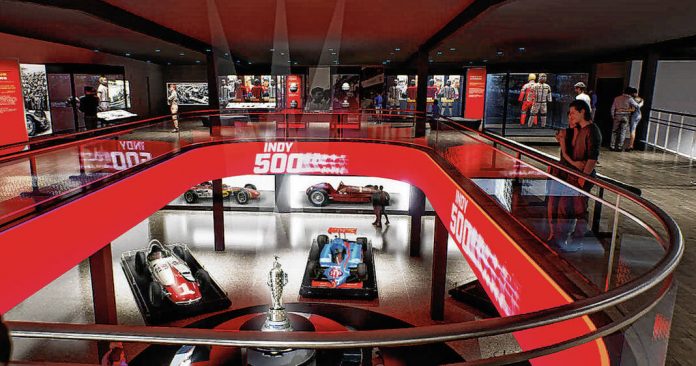The Greatest Spectacle in Racing is adding a little more spectacle.
By the time the 2025 Indianapolis 500 rolls around, people will have the opportunity to experience the adrenaline-pumping thrill of driving in an IndyCar. They can test their skills of racing tools and equipment in a “pit stop challenge.”
Behind-the-scenes tours allow visitors to see some of the world’s most unique and valuable racing artifacts up close.
“Right now, you really can’t touch anything. You can’t get into the car, in a way. With racing such a physical sport, things like the simulators that we’ll add will help give a sense of what it’s all about,” said Jason Vansickle, vice president of curation and education for the Indianapolis Motor Speedway Museum.
The Indianapolis Motor Speedway Museum is embarking on an $89 million campaign to completely transform the museum — the first time it has been significantly renovated in 40 years.
Known as “The Stories Behind the Spectacle,” the campaign aims to reconfigure the museum’s existing footprint to bring new exhibits and opportunities to the public. In doing so, museum leadership hopes to create an attraction that adds a richness and depth to the Indianapolis Motor Speedway experience.
“You come in, you follow a path, you learn the stories behind the 500. You have experiences that lets you feel what it’s like to be in the 500, to be a spectator here at the track during the race,” said Joe Hale, president of the Indianapolis Motor Speedway Museum. “When we reopen, you’ll see a lot more thematic exhibitions moving forward.”
The Indianapolis Motor Speedway Museum has its roots stretching to 1945, when the motor speedway was purchased by Anton Hulman Jr. after World War II. Hulman eventually opened a building to showcase historic racing vehicles and memorabilia.
More than 55,000 artifacts and over 300 vehicles are included in the museum’s collection today.
“You really have that connection to the history of the location here, in terms of the artifacts and vehicles we have here,” Vansickle said. “The speedway itself is steeped in that tradition, and the museum augments that.”
But while the collection has grown, the ability for museum staff to showcase it has remained unchanged.
“It’s such a special place for so many people,” Hale said. “But the physical facility hasn’t changed in quite a while. There wasn’t a lot of storytelling involved — you walked in and essentially saw the whole museum. There was no mystery in discovering different parts of the history of the 500.”
About two years ago, speedway and museum leaders started discussing ways to improve the building. Senior staff members took trips to other museum attractions in the area, including the Kentucky Derby Museum, the Henry Ford Museum and the Auburn Cord Duesenberg Automobile Museum.
They wanted to learn more about how museums were presenting themselves, and what they were doing to attract larger, newer, more diverse crowds.
“The building was dated, and looking around at other ammenities here in Indianapolis and other museums, there is a push at modernity. From a board level down, we took a hard look at the organization and a desire to put the museum experience on the same page as the spectacle of the Indianapolis 500,” Vansickle said.
With those ideas in hand, a plan came together to improve the Indianapolis Motor Speedway Museum. A Lilly Endowment grant allowed officials to do feasibility study on the museum to determine what the building could handle, both in terms of construction and programming changes.
They launched the $89 million capital campaign in early 2023. Since that time, the efforts have raised $46 million.
The reimagined museum will focus on immersive and dynamic experiences in seven permanent and three rotating galleries.
“It’s a holistic change. There’s an overall top-down renovation of this location. It will be more story driven, better display of the artifacts in the collection,” Vansickle said. “There will be more hands-on experiences, more areas for children, and we’ll allow for that intergenerational learning.”
A key component of the renovation is dedicated to improving student learning in science, technology, engineering, art and math. A special STEAM classroom will be created, featuring educational resources and programs to use racing to benefit area children.
All of it together will hopefully integrate the museum more fully into the cultural fabric of central Indiana.
“We want to become more a part of this city’s awareness, improving awareness of what we’re doing and the role we play in the community of housing the stories of the Indianapolis Motor Speedway,” Vansickle said. “Obviously, the 500 and the speedway is such a touchpoint to our community and the state’s identity, and we want to be on par with that and other museums here.”





